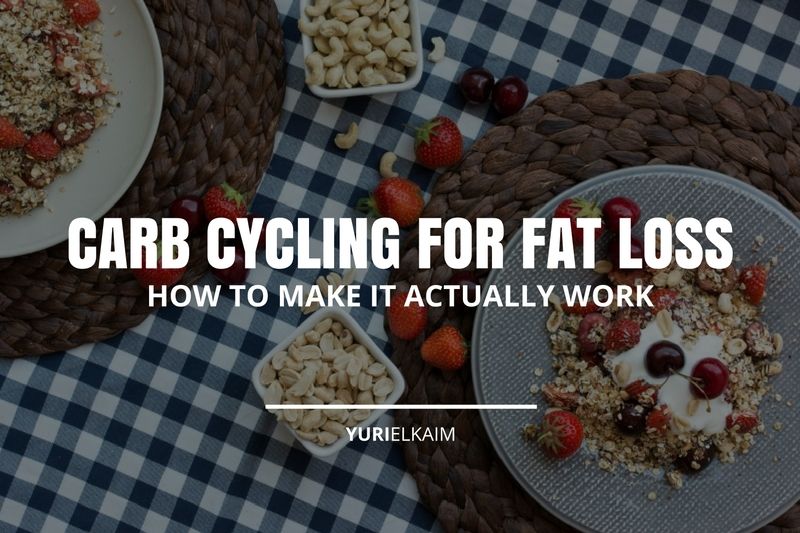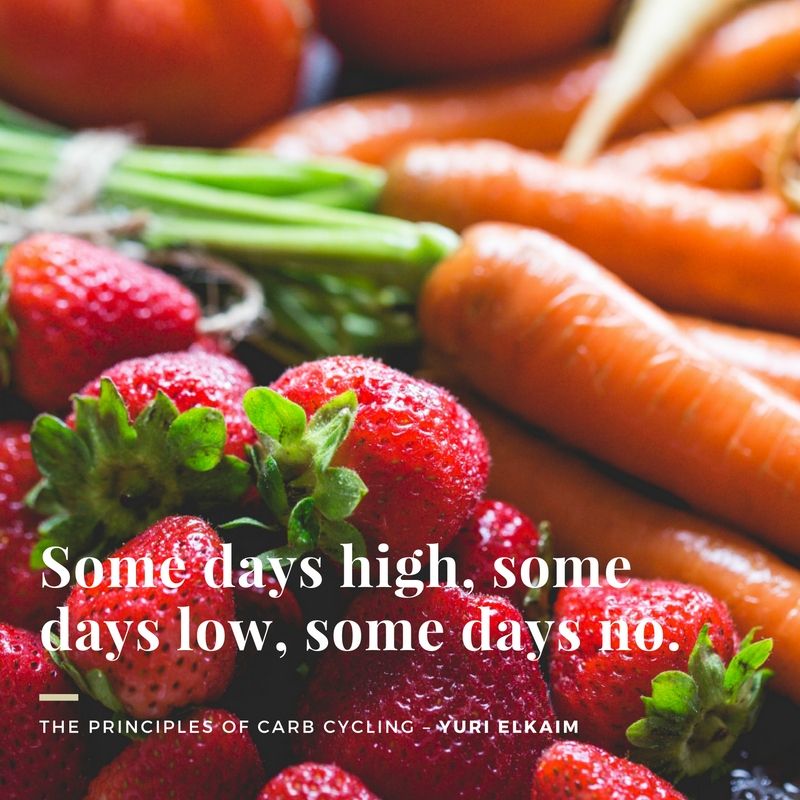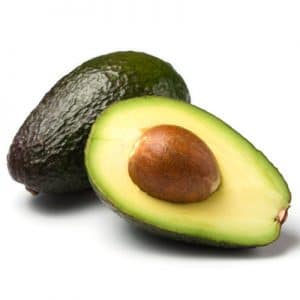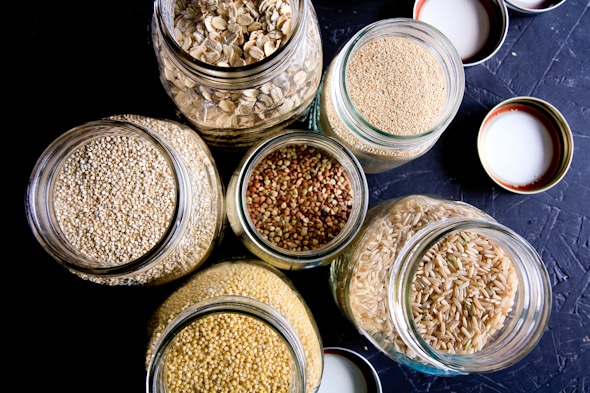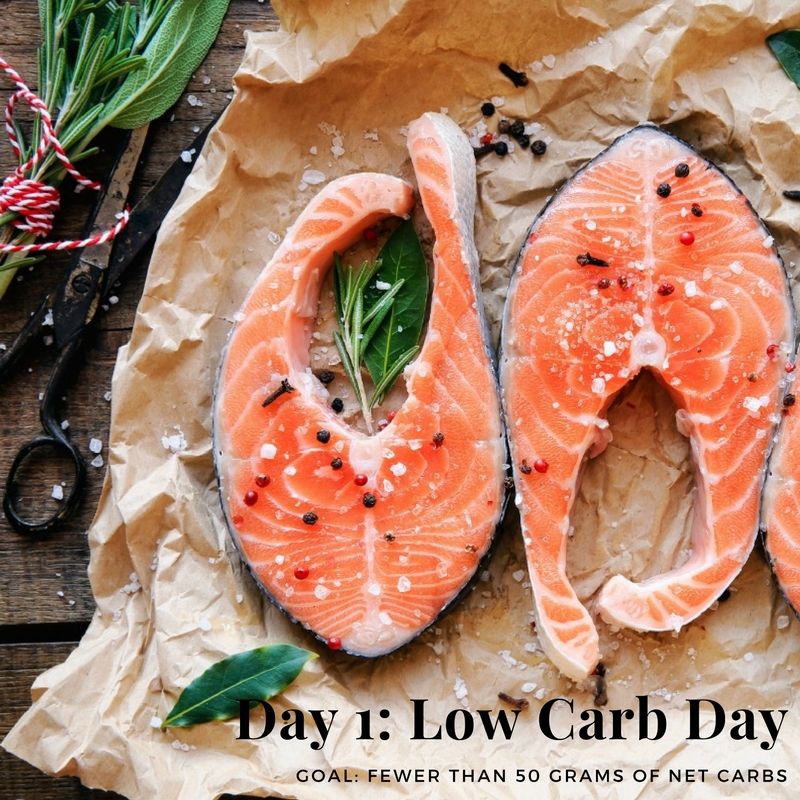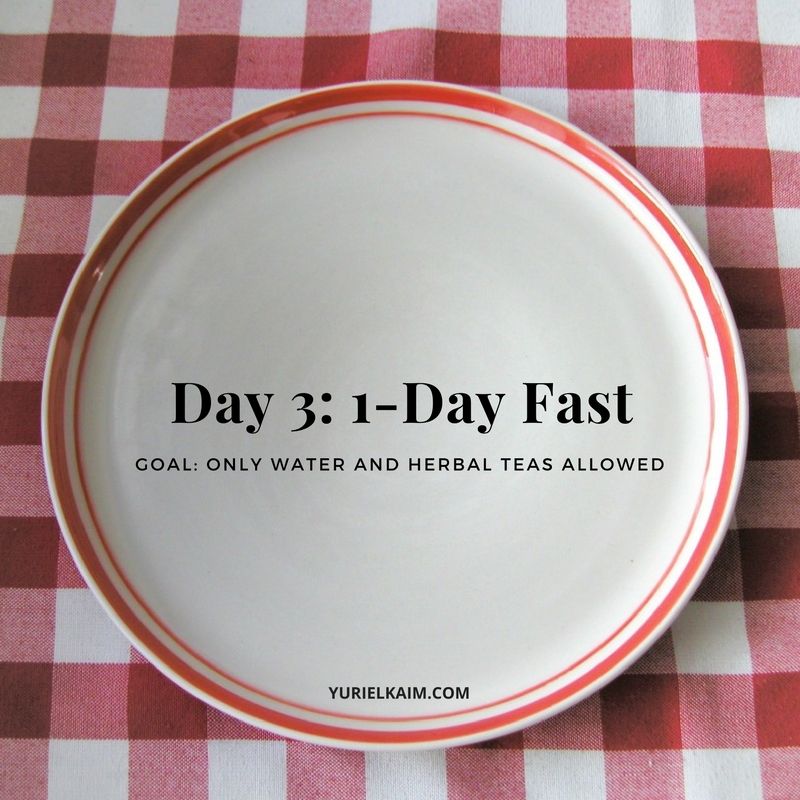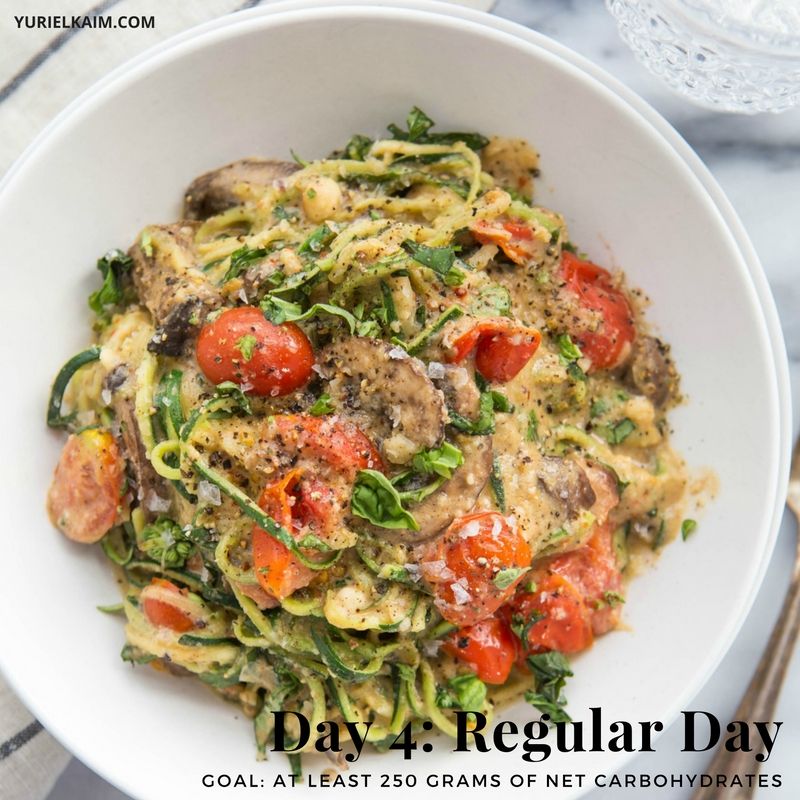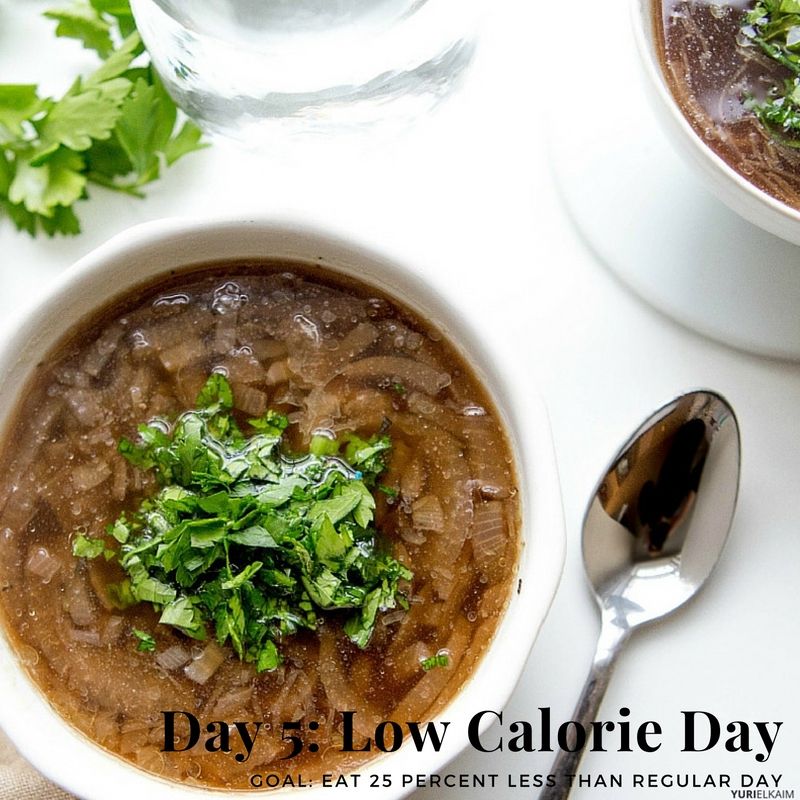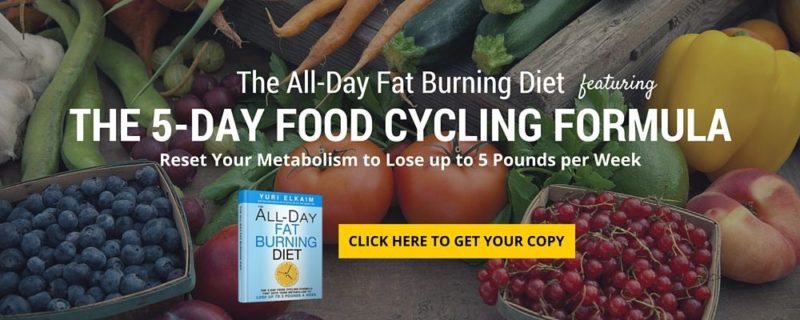In this article
There are a lot of different philosophies when it comes to eating carbohydrates.
Although the typical Western diet is pretty high in refined carbohydrates, many weight-loss diets rely on a low-carb component.
Then there are those who avoid carbs entirely, refusing to consume anything with more than a gram or two.
What if I told you there were benefits to be had all three approaches – and that you can experience them all in one surprisingly easy plan?
One day you would indulge in unlimited carbohydrates, and then eat hardly any the next, and then the next, you’d be somewhere in the middle.
That’s the idea behind carb cycling for fat loss, an eating pattern touted as a fast way to fire up fat loss by bodybuilders and fitness gurus alike.
But what exactly is carb cycling and just how effective is it?
Carb Cycling 101
The principle of carb cycling can be summed up succinctly:
Some days high, some days low, some days no.
This just means that varying levels of carbohydrate intake are alternated throughout the week.
Cycling carbs for fat loss is commonly practiced by those looking to enhance muscle growth, but there are far more benefits of carb cycling.
A few other advantages:
- It boosts insulin sensitivity
- It encourages fat burning
- It prevents leptin resistance
- It promotes healthier eating habits by focusing on healthy carbohydrates
How to Carb Cycle for Fat Loss
Carb cycling is pretty straightforward.
It divides the week into three categories: no-carb days, low-carb days, and high-carb days. Alternate between all three to reap the maximum benefits.
No-Carb Days
On these days, you’ll load up on fibrous veggies with some lean proteins and healthy fats in the mix as well.
Starchy fruits, vegetables, and grains should be avoided to keep carbs low.
Aim for fewer than 25 grams of carbohydrates total, most of which should be from high-fiber vegetables. These days should line up with rest days or relatively light workout days.
Low-Carb Days
Again, fibrous vegetables can be eaten freely, but starch servings should be limited.
Healthy fats should be the main energy source and lean protein should be included with each meal.
For these days, sticking to less than 75 grams of carbs is key.
High-Carb Days
Healthy carbohydrate foods can be consumed ad libitum on these days and the goal should be at least 250 grams over the course of the day.
High-carb days should align with the days when you do your hardest workouts.
I recommend eating your biggest meal post-workout, but grazing throughout the day on nuts, fruits, and other healthy carbohydrate sources is encouraged to reach your goal.
How Does Carb Cycling Work?
Carb cycling is a strategic method to promote muscle growth and fat loss simultaneously, by influencing the hormones that affect body composition.
Let’s take a look at the top four factors that explain why carb cycling is so effective.
1) Insulin
When we eat carbohydrates, they are broken down into glucose.
Insulin is then secreted into the bloodstream and is responsible for carrying the glucose to the muscle cells for storage or into the liver to be used later as energy.
After a particularly carb-heavy meal, the excess glucose that isn’t needed in the liver or muscles is broken down and stored as fat instead.
This is why so many diets focus on moderating carbohydrate intake. If you only eat as much as you need, it prevents them from being converted to fat.
Carb cycling helps us manipulate insulin levels and use it to our advantage.
With carb cycling, low-carb and no-carb days are key in promoting insulin sensitivity and minimizing fat storage.
Meanwhile, high-carb days are used to refill carbohydrate stores, amplify exercise intensity, and encourage muscle growth.
2) Serotonin
This neurotransmitter serves an important role in mood stabilization, sleep, sexual desire, and appetite.
Carbohydrates can actually boost the production of serotonin, which is why consumption of high-carbohydrate foods is so common during times of stress of depression (1).
It also explains why low-carb diets are often unsuccessful; depriving yourself of carbohydrates can lead to a lot of undesirable consequences and it’s partly because serotonin production is affected.
By switching up carbohydrate intake, carb cycling can effectively keep serotonin levels steady and cut out the negative side effects that accompany a low-carb diet.
3) Leptin
Also known as the “satiety hormone,” leptin has a major influence on regulating intake. As its nickname implies, it’s responsible for blocking hunger and controlling our appetite.
There are a few ways that leptin can be thrown off balance. During times of starvation, our body works hard to drive leptin back up by making us hungrier and causing us to eat more to “reset” leptin levels (2).
Conversely, eating too many calories and carbohydrates over a long period of time can cause leptin levels to skyrocket.
As a result, our body becomes resistant to leptin, which means that our brain doesn’t get the signal to stop eating when we feel full.
Both ends of the spectrum can inevitably lead to weight gain.
Carb cycling works by varying intake levels throughout the week to keep leptin in check. As leptin wanes during low- and no-carb days, high-carb days follow and boost it back up.
4) Cortisol
This stress hormone plays a big part in glucose production. When cortisol levels get high, they push your liver to start converting the proteins in muscle into glucose for energy.
Carbohydrate consumption is able to prevent the production of cortisol and thus prevent the breakdown of muscle.
Carb cycling helps promote muscle growth and avoid muscle catabolism by switching between high- and low-carb days, thus stopping the build-up of cortisol.
My 5-Day Carb Cycling Plan
Ready to rev up metabolism and kickstart fat loss? Try out my twist on carb cycling by following my 5-day carb-cycling plan!
Day 1: Low Carb Day
Goal: Fewer than 50 grams of net carbs
Avoid starchy carbohydrates and fruit to minimize your carb intake, but make sure you eat a lean protein with every meal.
Keep good fats as your main energy source and fill up on unlimited fibrous vegetables throughout the day.
Keep in mind that you should only be eating when hungry, and stop when you feel full.
Day 2: 1-Day Feast
Goal: At least 250 grams of net carbohydrates
Load up on healthy “feast” foods like sweet potatoes, quinoa, millet, and berries on this day.
Snack throughout the day but save your largest meal for after an intense workout.
Practice mindful eating as well by listening to your body and stopping when you feel satisfied.
1-Pot Chicken Alfredo (Dairy-Free)
Day 3: 1-Day Fast
Goal: Only water and herbal teas allowed
After your high-carbohydrate feast day, fast for one day and only consume water and herbal teas for 18 to 24 hours.
This is also a good opportunity to give your body a break from any supplements you might be taking.
Day 4: Regular Day
Goal: Resume normal diet
On this day, you should return to your normal eating pattern and eat as you typically would.
You should still stick to the basic rule of limiting refined and processed carbohydrates, and make sure you stop before feeling completely full to avoid any discomfort.
1-Pot Tomato Basil Pasta (Grain-Free)
Day 5: Low Calorie Day
Goal: Eat 25 percent less than regular day
For the final day of the cycle, eat as you normally would, but cut down the calories by about 25 percent. Keep it light with raw foods, lots of greens, and light soups to slash the calories easily.
To make it as easy as possible, keep this simple guide handy during your 5-day carb cycle.
3-Ingredient French Onion Soup (Vegan)
The Key to Carb Cycling
Remember that different things work for everyone.
While some may see major results from carb cycling, others might find that following a consistent diet with a moderate amount of carbs works well for them.
Everyone can benefit, however, from following a few of the central concepts of carb cycling:
Load up on fibrous vegetables every day. They are nutrient dense, low in calories, and should be a main component of everyone’s diet.
Limit or eliminate refined starches, like pastries, cakes, muffins, etc. They contribute very little nutrition-wise besides empty calories and sugar.
Focus on healthy carbohydrate choices. Fruits, tubers, and gluten-free grains are all excellent choices for rounding out a healthy diet.
Include lean proteins and healthy fats with each meal. Integrating these into every meal is just as important as including good sources of carbohydrates.
Common Sense Carb Cycling
Putting all the math and science aside, though, the best bodybuilders know the one simple key when it comes to carb cycling for fat loss: give your body what it needs.
If you’re planning an intense workout, don’t skimp on your carbohydrates. If you’re skipping the gym, only eat what you need and nothing more.
Even More Carb Cycling for Fat Loss
Want to learn how to tweak this program even further, for accelerated fat loss?
This carb cycling program is the foundation of my All Day Fat-Burning Diet, as outlined in my latest book.
You can learn more tricks and tricks for customizing this program to suit you and your goals. Find out more by clicking the banner below!

